

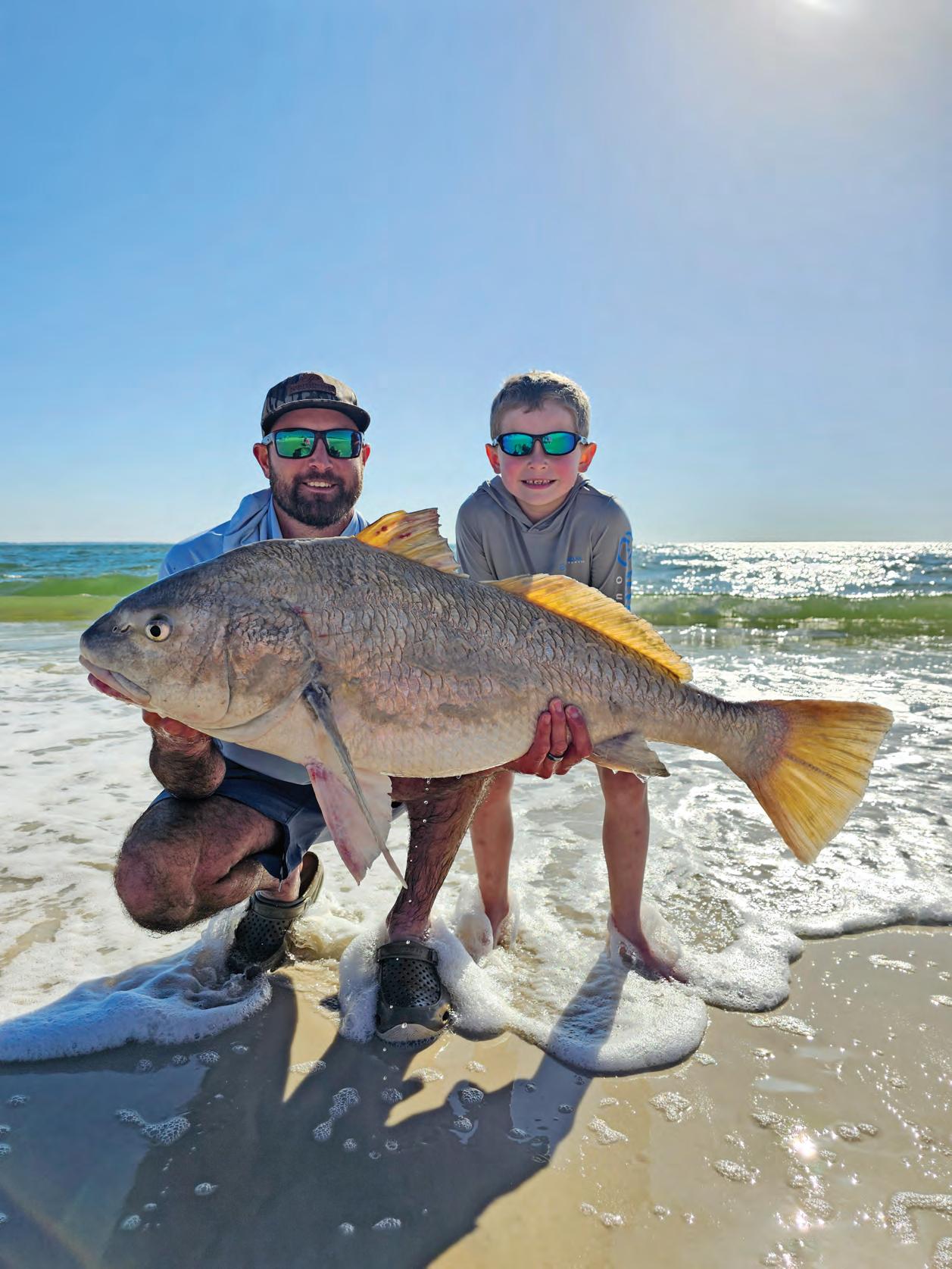


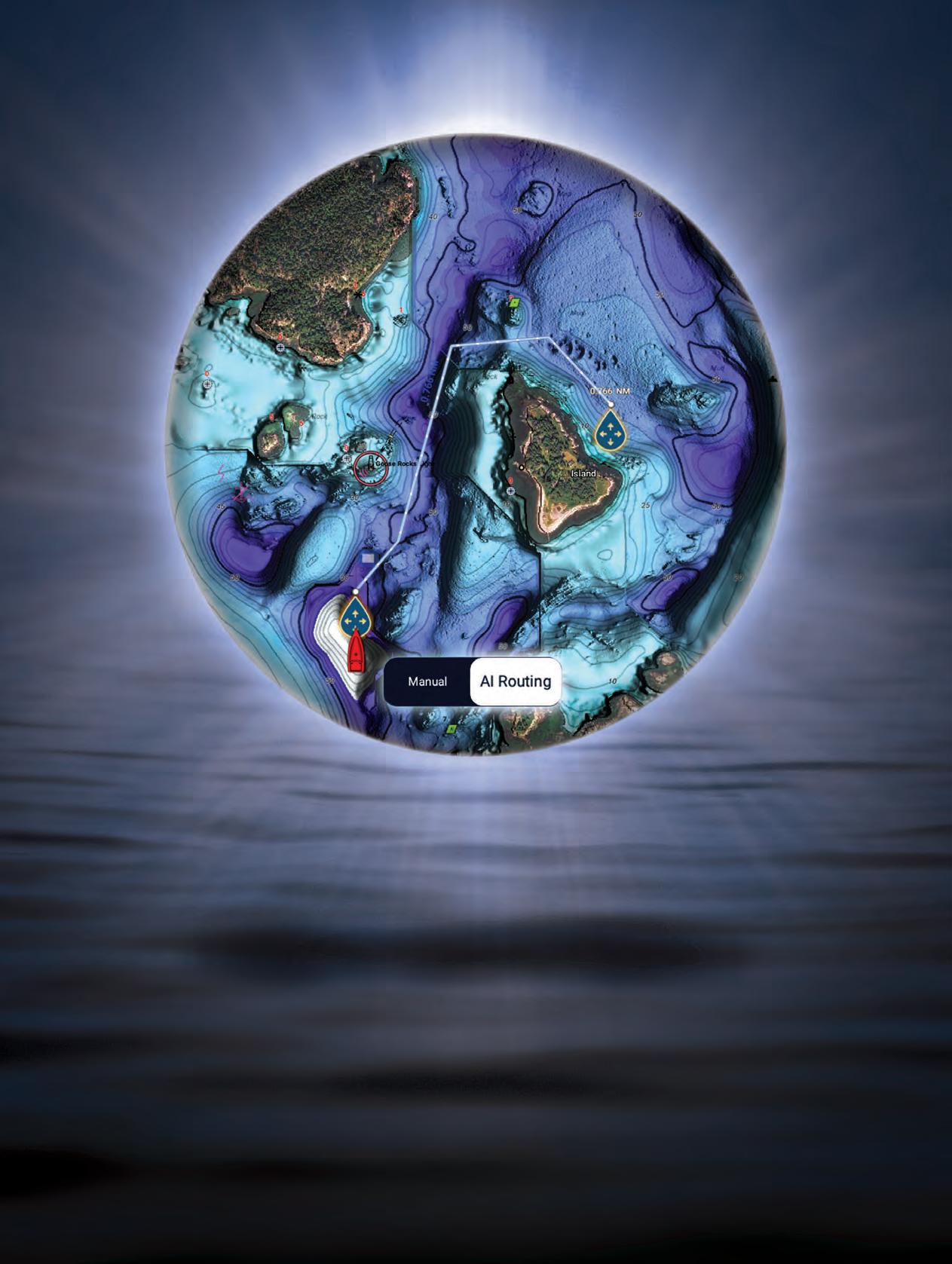
You want AI Routing! Let TZ MAPS with AI Routing make route planning a snap. Don’t take our word for it. Scan here to see for yourself how easy it is!


















You want AI Routing! Let TZ MAPS with AI Routing make route planning a snap. Don’t take our word for it. Scan here to see for yourself how easy it is!


















Embarking on the open water is an exhilarating experience, flled with the promise of adventure and relaxation. Whether you’re a seasoned sailor or a weekend cruiser, protecting your vessel with proper insurance is not just a choice—it’s a necessity. Explore the reasons why every boat owner should prioritize boat insurance for a worry-free voyage.
The open water can be unpredictable, with unexpected storms, collisions, or other potential accidents. Boat insurance can give you fnancial protection if there is damage to your vessel, providing coverage for repairs or replacement.
Accidents on the water can result in damage to other boats, docks, or even injuries to passengers. Boat insurance offers liability coverage, which can pay for damages or injuries you’re liable for while boating, up to specifed limits, and lawsuit costs if you’re sued. This includes damage you cause to another watercraft or if someone on or near your boat is injured and you’re found to be legally responsible.
Unfortunately, boat theft and vandalism are realities that boat owners face. Boat insurance has comprehensive and collision coverage that can protect you against events outside of your control, including theft and vandalism.
Accidents on the water may lead to injuries for you or your passengers. Boat insurance offers a range of optional medical payments coverage limits, helping to cover medical expenses if you are in an accident or someone is hurt on your boat, regardless of fault.
If you fnanced the purchase of your boat, most lenders require insurance coverage to protect their investment. Having boat insurance not only fulflls these requirements but also gives you peace of mind knowing that your fnancial interests are safeguarded.


Some water municipalities and marinas may require proof of insurance for docking or accessing certain areas. Boat insurance allows you the fexibility to explore different destinations without worrying about entry restrictions.
Emergency towing and assistance
Progressive boat insurance can include optional Sign & Glide® On-Water Towing coverage. If your boat is disabled or breaks down on the water, Sign & Glide® pays for on-water towing, jump starts, soft un-groundings, and fuel delivery.
Wreckage removal
If your boat sinks, Progressive boat insurance will cover the cost of removing your boat from the water (if removal is legally required).
Investing in boat insurance is not just about protecting a valuable asset; it’s about safeguarding the memories, experiences, and joy that come with your on-water adventures. Don’t let unforeseen circumstances disrupt your journey—navigate with confdence, knowing that Progressive boat insurance has you covered. Ensure a smooth and worry-free voyage, because when it comes to your boat, peace of mind is the ultimate luxury.
Scan to get a quote in as little as 4 minutes
learn more.





















Tim Barefoot
Since the endangered, gag grouper and American red snapper are o!-limits this month, it would be a good time to go deeper and/or change up your tactics to target di!erent species. For example, go ahead and catch your three scamp/red grouper combo, then switch over to smaller baits and smaller circle hooks on chicken rigs to target beeliners, trigger sh grunts and seabass.
I would strongly suggest taking live pin sh from the marina for scamps and red grouper. is will accomplish two things. One, it will weed out a bunch of trash bites from smaller snappers and other bait steelers because only the sh with a mouth large enough to eat the pin sh will give it a go, and two, it will catch the older (larger) sh that o en will not bite a chicken rig and cut bait. e chicken rig with a bank sinker, and the bank sinker with a triple swivel, leader and hook have been the industry standard for many decades, but these sh have evolved and have become savvy to this method, in my humble opinion. is is the reason the Decoy Jig system is so e!ective. ey’ve never seen anything like it and it’s a clever disguise of what is really happening; the weight and bait are in one clean package, attached by a piece of %uorocarbon.

ere is one downfall to shing live pin sh on the Decoy Jig—it will de nitely get the shark bite. Sharks, like many other sh, are hardwired to eat this struggling bait attached to something else they like to eat, like a squid or a crab.

ere’s another sh I didn’t mention earlier, but this is a good time of year to target hog sh. ere are many schools of thought when it comes to catching them. Many say the chicken rig is the ultimate and, yes, there have been a lot of hog sh caught on your standard chicken rig. But this is a pretty wily species, and hard to catch for a number of reasons. Not only are they hard
to get to bite, but they pull HARD! You have to have seriously strong connections because they will test every part of your tackle. ere’s one more sh that is almost as good table fare and that’s the white jolt head porgy. Same tactics, same everything; you just gotta nd them. ey are beyond delicious. You can troll all you want, but I’ll spend my time bottom shing for the best groceries and keep the light line out back for any wahoo, dolphin, kings or tuna that may cruise by. It pays dividends to jig up live cigar minnows and live sardines on the Sabiki or just purchase them for the light line. August and September are the months that wahoo, yellow n, dolphin, sail sh— you name it—are everywhere inshore following big schools of bait, and a live cig or sardine will de nitely get the bite. I would de nitely keep a live pitch bait ready on a circle hook on piece of %uorocarbon for the sail sh that’ll swim by the boat. Keep the thumping music, cooler slamming loud everything to a minimum if you want to have a shot at getting some of these sh to swim up to the boat. Fact: You’ll see more sh near the boat when you’re quiet, otherwise they will keep their distance and you probably won’t see them, and they’ll have their guard up if they do get near the boat.
Go on, get down to the bottom or at least lower in the water column for the best groceries and keep a pretty live bait out back on the lite line for a great day of catching...not shing.
Check out more from Tim Barefoot at barefootcatsandtackle.com.

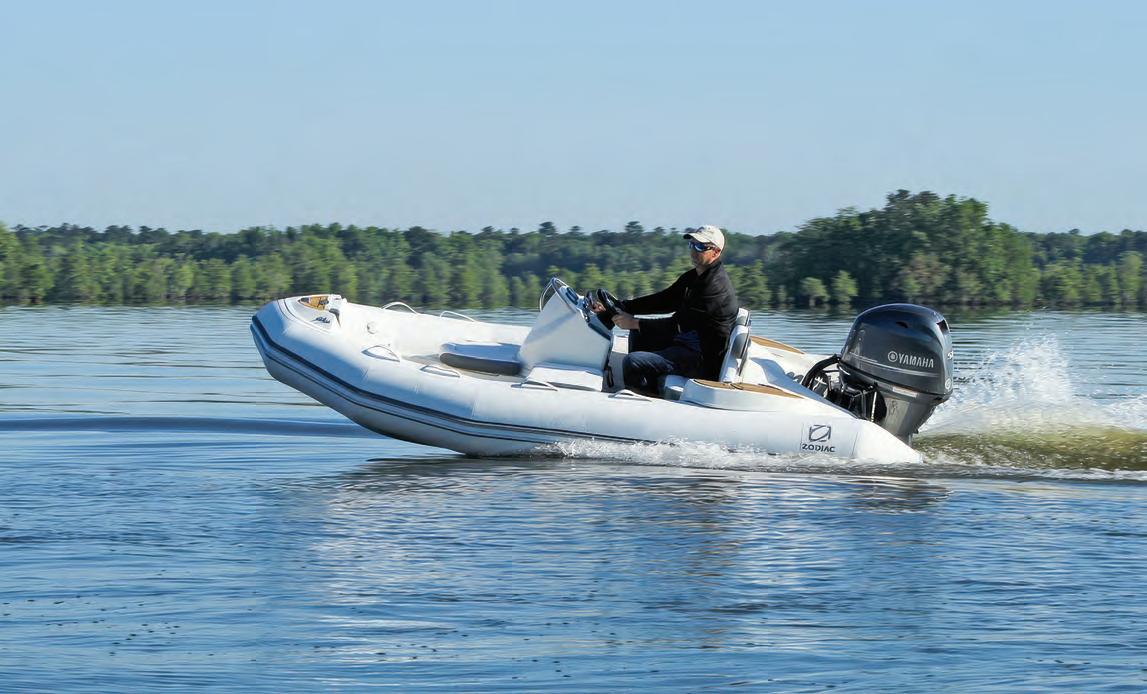



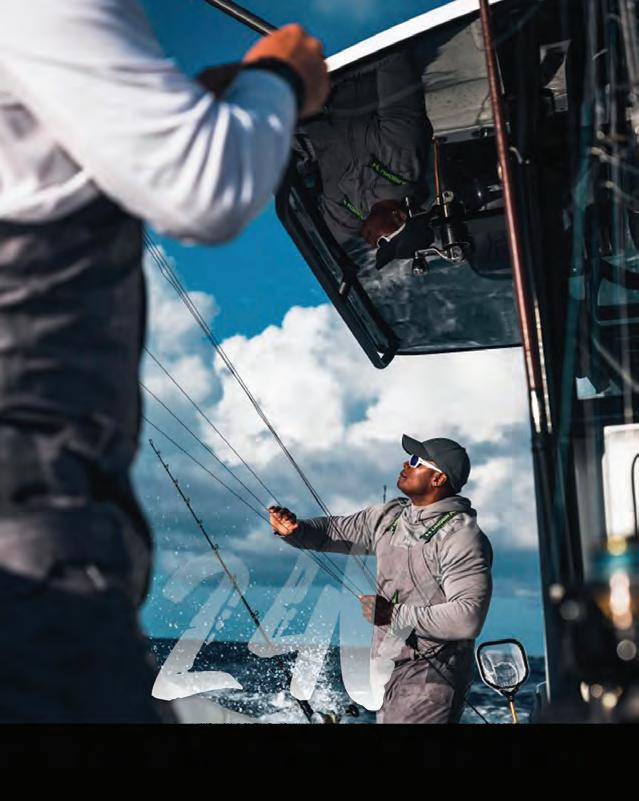











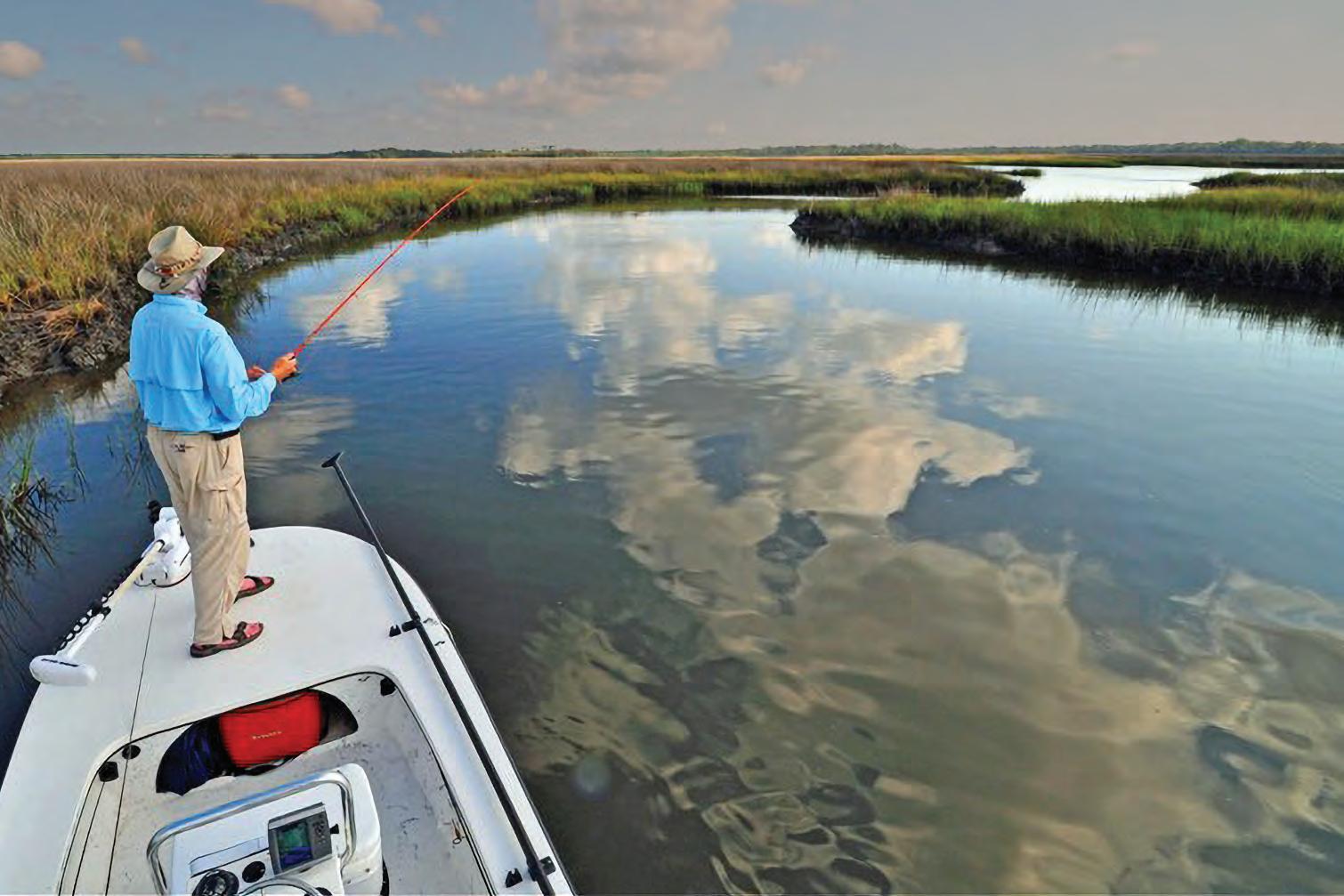
By Joe Woody
Somewhere in McDowell County, North Carolina, where the Blue Ridge Mountains lean in close and the rivers run clear enough to drink, there’s a place where sh outnumber people, and cell service is more suggestion than fact. It’s a land of steep gorges, sparkling lakes, and waters that curl through the woods like they have secrets to keep. Welcome to the triple-threat shing grounds of Lake James, the Linville Gorge, and the Catawba River — tucked into a county that doesn’t make much noise but delivers in trout, bass, and backcountry beauty.
If you’ve never heard of McDowell County, don’t worry — that just means the sh haven’t heard of you either, and your odds are still good. Whether you’re a dry-%y purist with a hip pack and a “River Runs rough It” complex or someone who likes to toss worms near pretty rocks, this corner of the Carolinas has a spot for you. Bass are stout and sassy. Trout are plentiful, and they have attitudes to match. So gas up the truck, tie on something that worked last season, and head for the hills. e shing is great, the views are even better, and McDowell County is ready to welcome you — even if the trout aren’t.
Lake James is the area’s big-water bu!et. is 6,800-acre reservoir between Burke and McDowell counties o!ers smallmouth and largemouth bass, walleye, crappie, bluegill, hybrid striped bass, and cat sh. Spring and early summer bring aggressive smallmouth to the surface from April to June. Tossing a Pop R or a Zara Spook at dawn can trigger explosive strikes. Crappie move shallow in May and June, while cat sh linger year-round, especially from fall through early spring. Bass shing is best around rocky points and submerged trees with crankbaits or so plastics. Walleye respond to trolling or jigging near the dam. If you’re a er cat sh, bring cut bait and patience. Lake James State Park has public ramps, campgrounds, showers, and picnic shelters — perfect for anglers who like their wild with a touch of comfort.
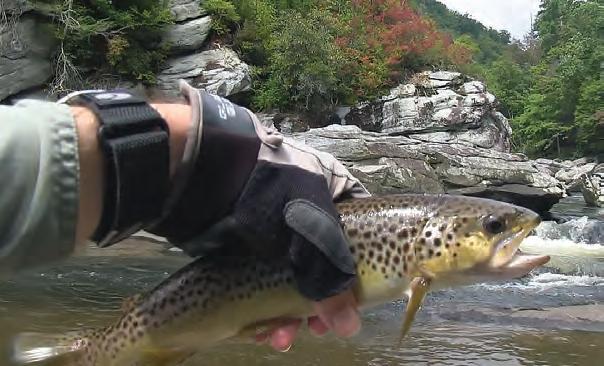
If Lake James is your comfy recliner, Linville Gorge is the rugged Adirondack chair that bites back. Known as the Grand Canyon of the East, this steep gorge is home to the Linville River, one of North Carolina’s best wild trout waters. e upper river holds wild and stocked rainbow, brook, and brown trout. Below Linville Falls, you’ll nd a backcountry adventure with native browns lurking in clear pools. Reaching prime spots requires steep descents, with some trails dropping 1,400 feet. e solitude and scenery reward every blister. Bring light tackle, stealthy casts, and plenty of water. Spring hatches bring trout to the surface, and a well-placed dry %y can tempt a wary sh. Remember your headlamp — climbing out in the dark is no fun.
Below Lake James, the Catawba River %ows cool and clear, sheltering rainbow and brown trout that grow large and wary. Float trips are ideal. An eight-mile dri from Bridgewater Dam to Morganton delivers ri sh. e Joseph McDowell Greenway o!ers piers, canoe launches, and bank access perfect for beginners or families. Streamers and weighted nymphs excel in the tailwaters, while warmer sections downstream attract bass and pan sh.
Wherever you cast, the sh here don’t come easy — but they come honest. And in this corner of the Blue Ridge, that’s the best kind of bite.



















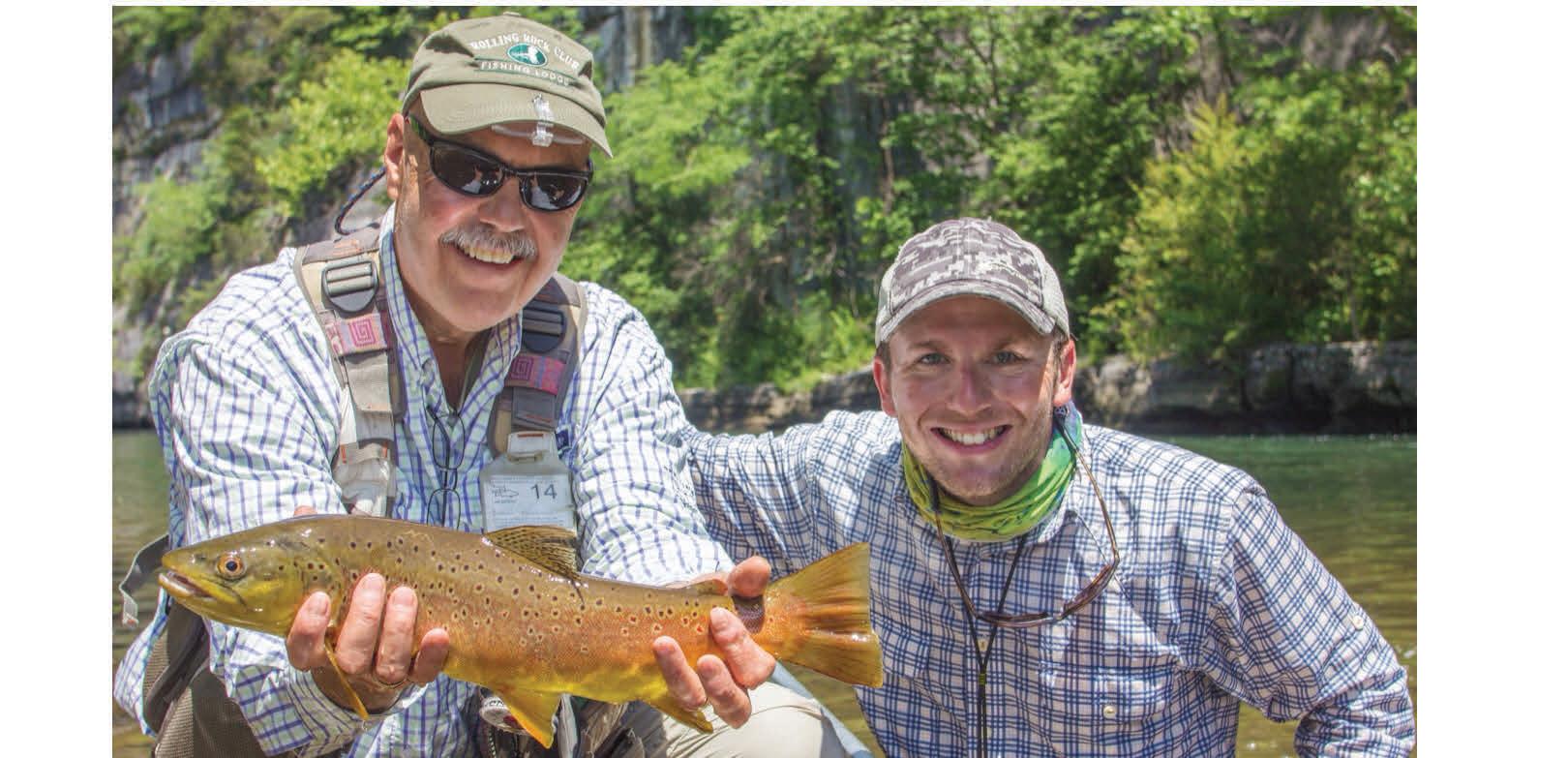




Capt. Mike Smith

Black drums, aka “Big Uglies,” are a super fun sh to catch. It doesn’t matter if they are 18 inches weighing two pounds or 5 footers weighing 90 pounds. ey put up one heck of a dragpulling ght once they gure out that they’re hooked.
Black drum can be found in inlets, saltwater estuaries, bays, river mouths, brackish creeks and especially anywhere in close proximity to oyster beds as they love to eat oysters, clams, crabs, shrimp and bait sh. ey are o en in huge schools and will stay in one spot for a week or so if there is a lot of food for them and not a lot of predators, which means that you can catch dozens of them when the bite is on.
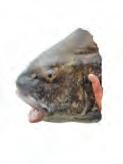
My favorite way to target “big uglies” is on the incoming tide, in shallow estuaries, less than 3 feet deep. at is when you can see them tailing as they root around oyster clumps for crabs and shrimp. A well-placed shrimp or crab o!ering will get their attention very quickly. Make sure you have enough weight to get it to the bottom so they can nd it.
on them. De nitely sh the older docks with the most stu! growing on them. ese docks pilings will attract the most crabs and shrimp to them. Old dock pilings are like grocery stores for black drum. When I sh the docks for black drum I usually have one of two baits with me. Live or frozen shrimp or a scented shrimp jig. ose are my goto baits for drum around the docks. Real shrimp works the best, but the scented jigs are pretty good too. A shrimp rigged with a small split shot is how I usually target black drum. Just cast it to where you think the sh are and wait for the hit. If you are shing with a scented shrimp jig just bounce it slowly on the bottom as you reel it in. It is similar to the way that you would sh for a %ounder. e slower the better.
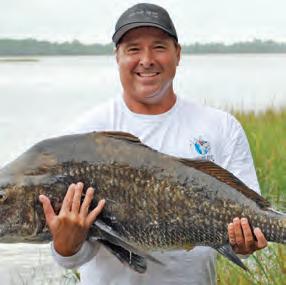
Black drums have four nostrils, and their sense of smell is amazing, so the stinkier the bait, the better when targeting these sh. A great arti cial bait is the Berkely Gulp shrimp on a 1/8 ounce jig head. You can just cast it to the sh and let it sit on the bottom and wait for them to nd it. However, if you give it a bounce or two you will usually get their attention much more quickly.
Another great place to target “big uglies” is around docks. Dock pilings tend to have lots of oysters, clams, barnacles and sponges growing
For surf shing anglers, large schools of black drum typically work their way up and down the beaches in the cooler months feeding on crustaceans. Use a beefed up pompano rig, jig or sh nder rig and place them in front of the schools approaching. Long casts are o en needed, so be sure to have plenty of line capacity on your surf shing reels when targeting the large ones. Not to mention, once you hook into a big drum the drag is going to go screaming! You’ll want anywhere from 20-50 lb. main line for your best opportunity to land one.


Black drum make for a tasty dinnertime treat, but I wouldn’t suggest eating the big ones. ey are always full of worms. I nd that the best ones for eating are 28 inches or less in length.
I caught the black drum in the picture above on a dead shrimp. It was about a 50 pounder and took 30 minutes to get it in. I saw it tailing next to an oyster bar.
Capt. Mike Smith, owner of Fish Your Ass O Charters, is an inshore shing guide who has been shing the inshore waters, oyster bars and grass ats of Florida for more than 40 years. Reach him at (561) 339-2317, email: contact@ shyourasso .com or visit shyourasso .com.
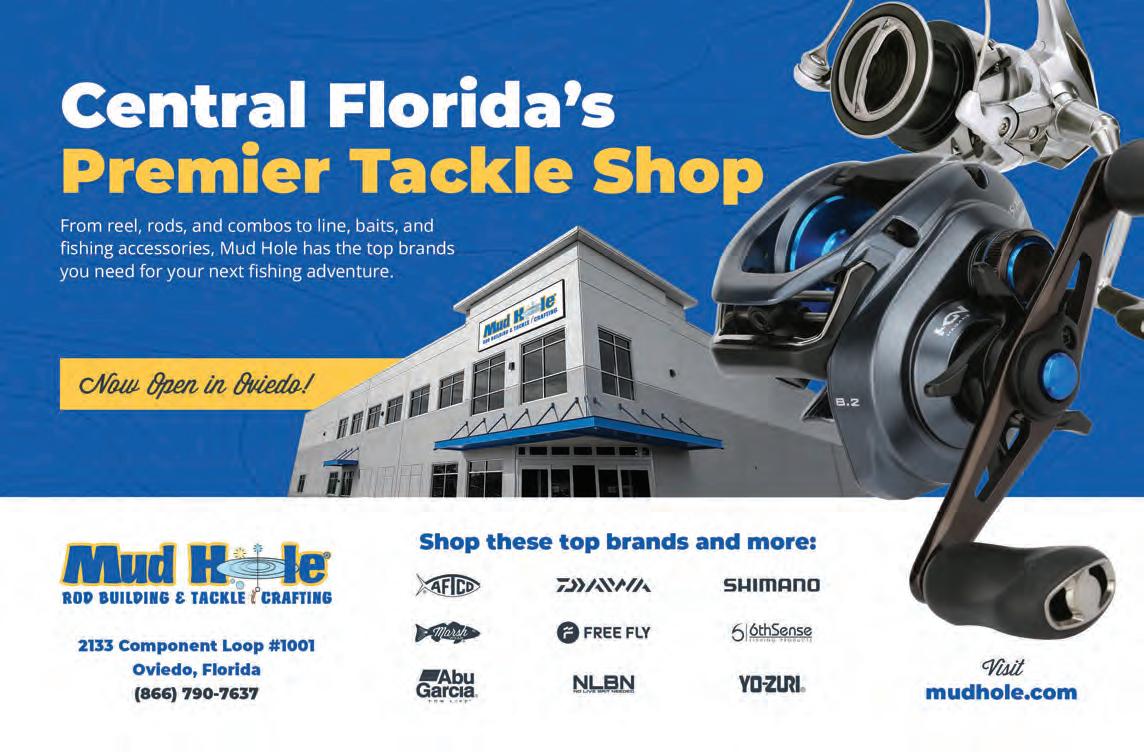

By A. deGruchy
Late spring into early summer is prime time for permit in Islamorada. !ese sh are picky, powerful, and love crabs, so having the right gear and approach can make all the di erence in getting one to the boat.
A 7’ to 7’6” medium-heavy spinning rod with a fast action provides the backbone needed to handle their long runs and sudden bursts of speed. Pair that with a high-quality reel in the 4000–5000 size range, spooled with 20–30 lb braid for better sensitivity and hook-setting power. Personally, my go-to is the Fenwick Inshore Elite rod paired with a 4500 PENN Authority reel. Since permit are known for being line-shy, uoro leaders are a must. 20 lb leader is ideal along with a 2/0 circle hook to increase the chances of a solid hookup. We rely on the Mustad Demon inline circle hooks and they’ve never let us down.


Finding permit in Islamorada means knowing where and when to look. Flats and channels are

the best spots, as well as some public wrecks. Watch for sh tailing in shallow water or cruising deeper cuts, or schools of permit circling wrecks. A moving tide, whether incoming or outgoing, stirs up crabs and gets permit feeding. When presenting bait, it’s important to cast ahead of where the Permit are heading, let the crab sink naturally, and maintain light tension.
Patience and stealth go a long way when targeting these sh. If a permit is spotted, it’s best not to rush. A smooth cast, a natural bait presentation, and a little patience can make all the di erence. Once hooked, steady pressure and a good drag system will help handle their powerful runs. May and June in Islamorada o er some of the best permit shing of the year. If you’re ready to chase permit in Islamorada, book your trip now at www. beansport shing.com, spots are limited!
Be sure to follow deGruchy’s adventures at @bean_sport shing on Instagram and YouTube.





Stationed strategically around the East Coast, all Suzuki RePower Centers have achieved the highest level of Suzuki certifcations to meet and exceed your repower needs. Mastry Engine Center has received the Suzuki Marine Super Service Award and has been ranked #1 in Suzuki Marine US Sales! 60 YEARS OF REPOWER EXPERIENCE!

RePower Packages designed to best ft your needs and not stretch your budget. Financing available.

Rest assured, all Mastry Suzuki RePowers are backed by Suzuki’s industry leading 5-year or 7-year factory warranty.
When Considering A Repower, Consider These Factors:
•Every Authorized Mastry Suzuki RePower Center has decades of repower experience providing proper rigging, controls, propeller matching and in water testing
•With a Mastry Suzuki RePower, owners gain improved performance, less noise and greater reliability
•Mastry Suzuki RePower’s exclusive Owner’s Edge Program*
•Mastry Suzuki RePower Centers use authentic Suzuki OEM parts and have factory certifed technicians


Since 2014, Mastry Engine Center, has been building the premiere Suzuki Outboard repower network in Florida. Today, Authorized Mastry Suzuki Outboard Centers have been exceeding expectaions in the Southeast for over two decades. Recently Suzuki Marine requested Mastry Engine Center to expand the network throughout the Northeast. Now boat owners from Maine to Florida can be assured of the best support for their Suzuki outboard repower project. All Authorized Mastry Suzuki RePower Centers provide the best options, information and package pricing for excellent performance in repower.




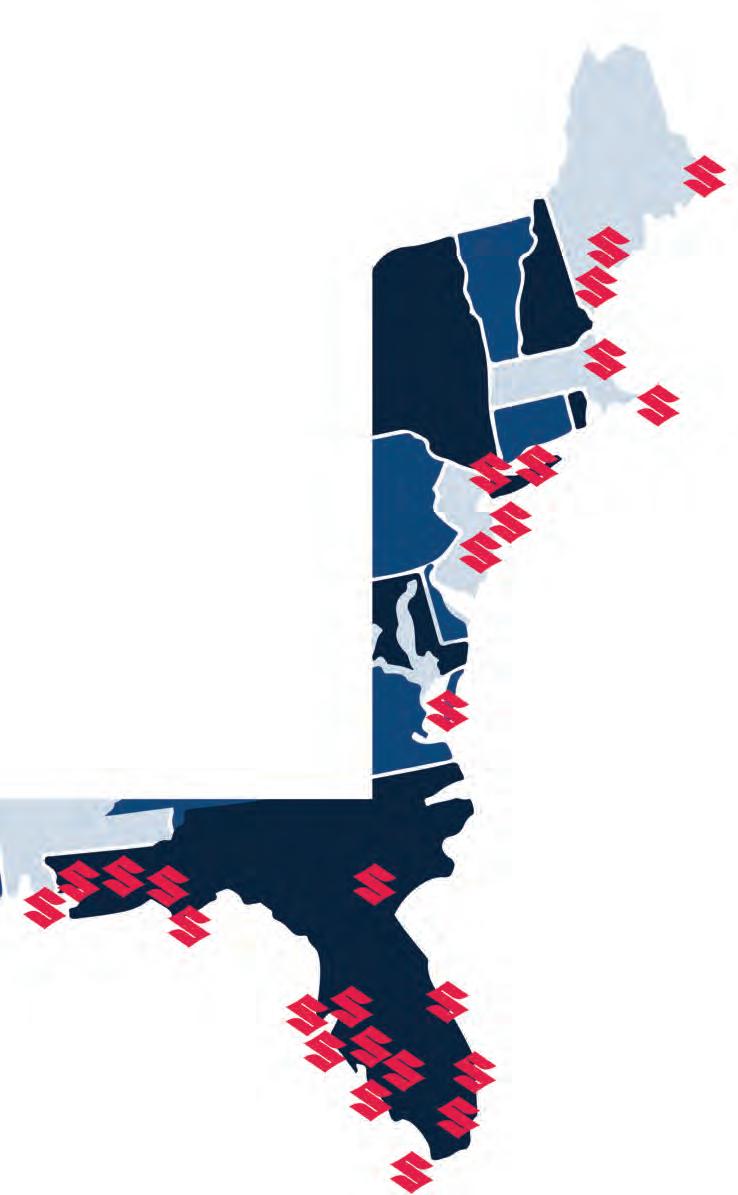

*Get with the Program!
When you purchase a new Suzuki outboard from an authorized Mastry RePower Center you qualify to become a member of the Mastry Suzuki Owner’s Edge. Owners receive an identifcation card that provides them with important information about their Suzuki outboard motor as well as a passport to additional benefts during ownership. Members enjoy a detailed engine maintenance schedule, Mastry Suzuki RePower Trade Program and special pricing from Mastry Suzuki Partners.
When summer rolls around and the tides align, there’s no place I’d rather be than Southwest Florida—with a rod in hand and visions of giant snook dancing in my head. !is year, my buddies and I made the pilgrimage with a simple mission: land a personal best. Big sh only. No compromises.
Dawn Patrol: First Cast, First Heartbreak
Our daily rhythm was dialed in: sh at rst light, break for lunch and a nap, then hit the water again at dusk. On our rst morning, we were thighdeep before sunrise, casting into the mystery of the early light. Within minutes, I hooked a brute. It crushed my lure and made a blistering run—until my line snapped clean. Devastated, but not alone; the others were tight on steady 20–25 inchers. We spot-hopped the rest of the morning, landing a solid variety of sh, then rested up, ready to tangle with giants again at dusk.
Evening Drama: Three Strikes !at evening, we waded into a legendary snook haunt. I connected again—with something even bigger. A er a long, nerve-wracking battle, my
leader snapped. Again. Moments later, John hooked into a monster that nearly emptied his spool… and then his leader failed too. We were stunned but red up. !e big girls were here.
I re-rigged and kept casting. Soon enough, another explosion on my paddle tail—this one the biggest yet. She breached once, massive and thick. !en, just like that, gone. My third heartbreak of the day. Lesson learned: if you’re chasing giants, bring the heavy gear.
Turning the Tide
By Capt. Michael Okruhlik

massive strike. !e sh peeled line o like a runaway train, then turned and charged. I cranked fast, heart in my throat. !e ght was clean, intense and unforgettable.
Day two brought redemption. Je landed his personal best—an impressive 34-inch snook on a 4” Knockin Tail Lure. I was eager to return to the spot that broke us, but a sudden evening storm shut us down.
Final Shot, Forever Fish
Our last morning o ered solid action—snook to 8 pounds, nothing to complain about. Still, I couldn’t shake the thought of one last chance that evening. No storms. No wind. Just at, silent water and that nal opportunity.
She measured a fat 38 inches, bottoming out my 15-pound scale. Hooked right in the jaw, leader untouched. My new personal best.
The Verdict
!is trip was a rollercoaster—equal parts frustration and triumph. But that nal evening, under a fading Florida sun, everything came together. And that’s what keeps us coming back: one cast away from glory.
Capt. Michael Okruhlik is the inventor of Knockin Tail Lures®, and the owner of www.MyCoastOutdoors.com.




New & Preowned Boats at Blowout Prices!
Boats from 21 of Central Florida’s Best Dealers Representing Over 90 Manufacturers
Fishing Boats
Pontoon Boats
Ski Boats
Bowriders
Cruisers
Luxury
Economical
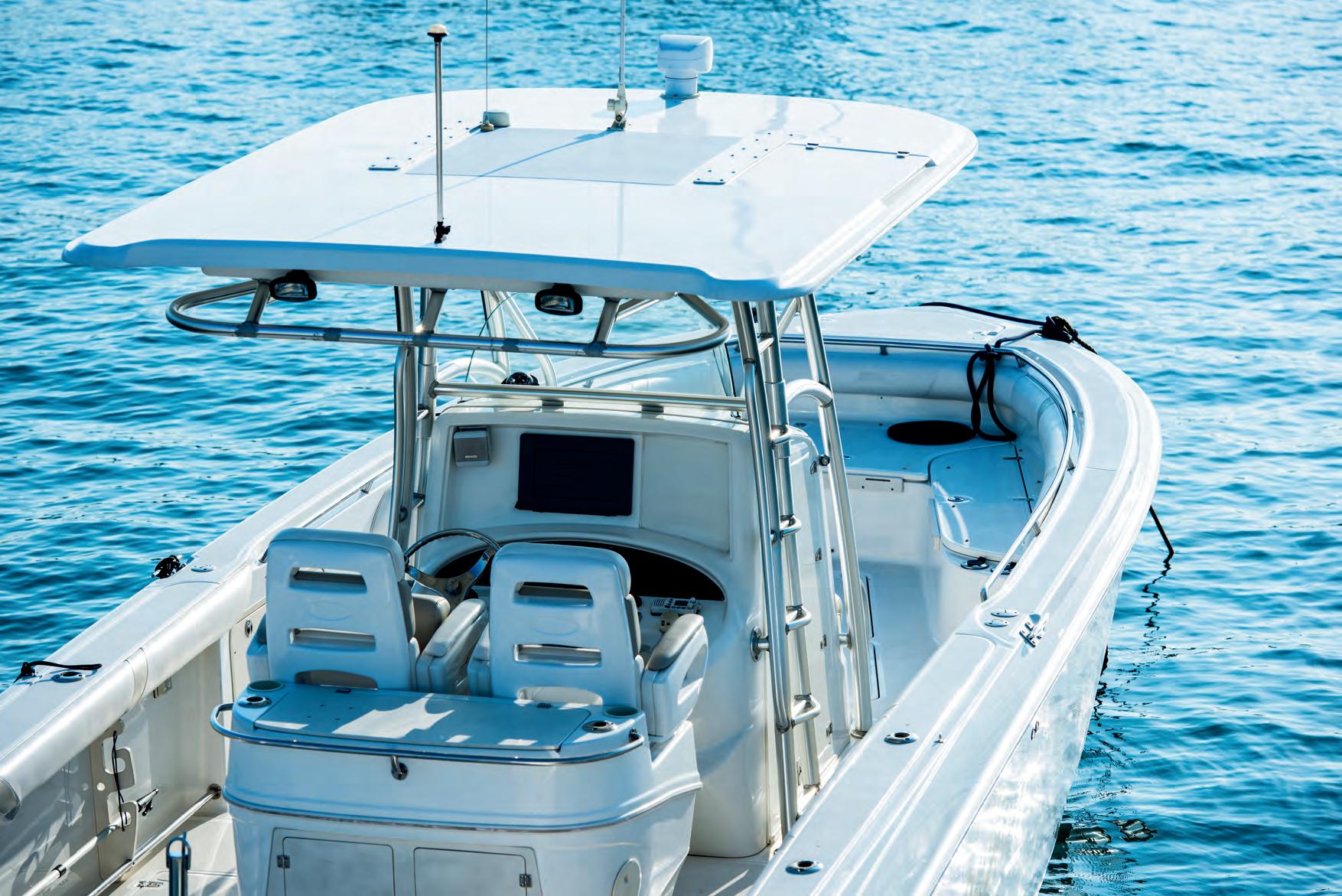
Boat Show Hours
Friday & Saturday 10am to 8pm Sunday 10am to 5pm





FINANCE
DARLENE TAYLOR
DISTRIBUTION
JERRY TAYLOR


August can be one of the best months of the year to fish for redfish. It’s also the hottest, so you want to go early in the morning before first light for the early bite. Sometimes in the middle of a calm day big schools of 50 to 200 redfish can be spotted on the edges of flats between 1- and 3-feet of water in the Indian River or Lagoon. Try using live shrimp, flies or Gulp shrimp with no weight. Use a light action rod and 8 lb. braid with a light leader for best results.
Trout fishing has been good in the morning. Use topwater plugs, or the best technique is to use live pigfish on the flats, best when near bait schools!
The black drum are also still around, usually on the drop offs. I use live shrimp or pieces of crab or Gulp shrimp and throw at the fish and let it sit on the bottom.
Tarpon fishing has been very good and I expect it’s going to continue in August. Sight-fishing in Indian River and Mosquito Lagoon, look for fish rolling. The tarpon come back to the same places year after year and they’re usually in 3- to 8-feet of water in the Indian River or cruising near the channel edge. I typically use spinning tackle with 20- to 40-pound braided line with 60 pound fluorocarbon with a 6/0 circle hook, throwing a live mullet or bunker at them or slow trolling them.

Capt. Glyn Austin
Capt. Lukas Brickweg
Capt. Chris Cameron
Capt. Scott Goodwin Charlie McCullough
Capt. Troy Perez
Capt. Jim Ross
Ocean fishing for tarpon has been great! In the ocean, look for the schools of bait just behind the shore-break and throw a cast net on them. Keep your eyes open as you will see the tarpon rolling or coming up to gulp air; usually they are in packs of several fish or large schools and following the bait. The fish should be in 20- to 40-feet of water. Here you’ll also find schools of jacks, sharks, reds, bonita, etc. feeding near these schools of bait while fishing for tarpon. Use gear heavy enough to get these tarpon to the boat as quick as possible; long fights with light gear usually will mean the predator sharks will have an easy meal when you release them!
Watch out for the afternoon rains and thunderstorms moving in fast and stay safe!
CAPT. TROY PEREZ
Troy Perez Fishing facebook.com/captaintroyfl capt.troyperez@gmail.com (321) 607-2033






1
4

3:54 AM 2.2 9:41 AM 0.1 4:03 PM 2.1 10:08 PM -0.4 20M 4:58 AM 2.3 10:42 AM 0.1 5:05 PM 2.1 11:05 PM -0.4 21Tu 5:57 AM 2.3 11:38 AM 0.1 6:03 PM 2.1 11:58 PM -0.4 22W 6:50 AM 2.3 12:29 PM 0.0 6:55 PM 2.2 23Th 12:48 AM -0.5 7:38 AM 2.4 1:17 PM 0.0 7:42 PM 2.2 24F 1:34 AM -0.5 8:21 AM 2.4 2:02 PM -0.1 8:26 PM 2.2 25Sa 2:17 AM -0.4 9:01 AM 2.4 2:44 PM -0.1 9:07 PM 2.2 26Su 2:59 AM -0.4 9:38 AM 2.3
2.2
PM -0.3
2:48 AM 2.2 8:37 AM 0.1
PM 2.2
PM -0.3
3:25 PM -0.1 9:47 PM 2.2 27M 3:38 AM -0.3 10:14 AM 2.3 4:04 PM -0.1 10:26 PM 2.1
28Tu 4:17 AM -0.2 10:50 AM
f this August is anything like August was last year, it’s going to be a fantastic month of tarpon fishing here on Florida’s Space Coast. These huge silver fish are one of our top sportfish species, and we should have good numbers of teenage and adult fish in the 60- to 140-pound range for nearshore anglers to pull on.
Most of our tarpon are caught on live baitfish; menhaden, mullet, croakers and pilchards are the most prevalent of these that I like to use. During morning and afternoon sessions, my clients and I can sometimes get these fish to eat artificial lures like Saltwater Assassin 4- to 5-inch jerk baits or sea shad.
Usually I find schools of tarpon just beyond the surf break between Satellite Beach and Playalinda Beach. Running and gunning the bait pods in our near-coastal waters is my preferred method for finding pods of feeding fish. The thrill of hooking big tarpon is unmatched. These fish take off on a drag screaming run that is usually finished with a huge arial jump and gill-rattlin’ head shake. Tarpon have no problem earning their frequent flyer miles!
If you would like to come experience the thrill of hooking a tarpon, give me a call or book your trip online and let’s make a plan to go catch your next memory!









August fishing can sometimes be a challenge, but also a fun time. The cold water is usually still around and causing issues for bottom fishing and finding bait. By cold water, I’m talking about the yearly thermoclinem which came early this year so hopefully its gone early. Just because you can’t get a bottom bite going doesn’t mean the bottom fish don’t come up in the water column a little. Get on the wrecks and chum. You will find the cold pushes the fish up. They try to get to the warm water level. It’s not uncommon at all to see amberjack, snapper, cobia, mangroves and many other species not far from the surface. Picking out the biggest fish can be fun, especially for your charters. Almost forgot about the cobia run. That cold water also pushes them cobes to the shallows.
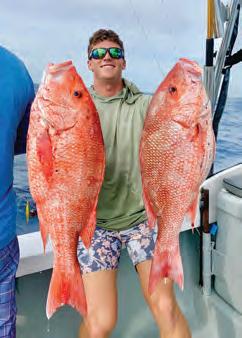



Mahi. Cold water really pushes those mahi up in the stream as well. Get out there and put your best baits out. Now is the time to get them. If you have no luck out deep, or go to 8A and troll fast through the reef. We catch many fish—even wahoo—on 8A.
Kingfish should continue to do well. Many fish in the 40 lb. class have been caught recently. Joe had three close to 50 the last few weeks. Nearshore beach fishing is going to really be picking up. The tarpon are there and rolling every day. You can slow troll them or just drift in the mornings with live bait. We have caught them on everything—chunk baits, live baits and artificials. There is not much they won’t eat. Beach fishing in 20-30 feet is a blast. You’d be amazed how shallow all these fish come in. Kings, bonito, crevales and many other fun fighting fish. Look for the schools of bunker. If you find them, you will find the fish. Shark fishing is about as good as it gets right now. If you’re looking for some fun with the kids, anchor up in 20 feet off the beach and hold on. Good luck and we hope to see you out there!












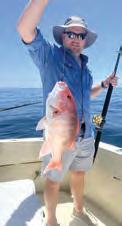


Temperatures are up but our fishing is red hot here on the St. Johns River. Largemouth bass, catfish and panfish are going to bite if you fish where they live and fish when they feed. Summer patterns have set in. Expect the fish to eat early in the morning, late evening, and at night. (Early means before daylight until around 9:00 a.m.)
Take advantage of schooling bass early at the mouths of the lakes where the St. Johns exits the lakes. Lipless crankbaits like a Rattle Trap, or a shallow suspending slash bait like a Rapala X-Rap will get lots of action. Don’t blind cast or fan cast; the key is to land the bait right on top of the surface-striking fish. Wait to see the fish striking shad on top and then quickly and accurately place the lure. If the fish misses the shad, it will take the lure. If the feeding fish eats the shad, another schoolie will take the lure. The key is a fast, exact presentation. Fishing on a calm night with a big moon and a black-colored topwater jitterbug or a 10-inch black worm dead stuck on the bottom is sure to draw the big strike. Beat the bugs with all-natural repellant that works! Bug Stuff is USA made in Florida and available on Amazon.
Panfish eat crickets and insects on days they have a hatch. Target them on the downstream bends next to deeper water. Fish the moving water, but look for areas where the flow creates eddies and slower water. In the lakes, use red worms over sandy or shell bottom.
Catfish like to feed where the water is moving fast. After a couple days of heavy rain, target them in deep bends with just enough weight to hold bottom and a half a piece of fresh, peeled shrimp. Try an egg sinker to allow the bait to roll slowly. Cast upstream of the deep holes in the river bend and allow it to roll down the drop off.

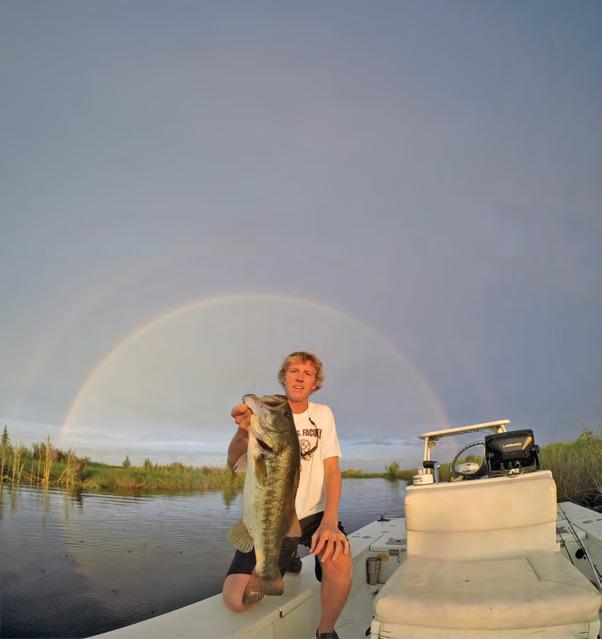

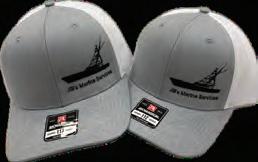




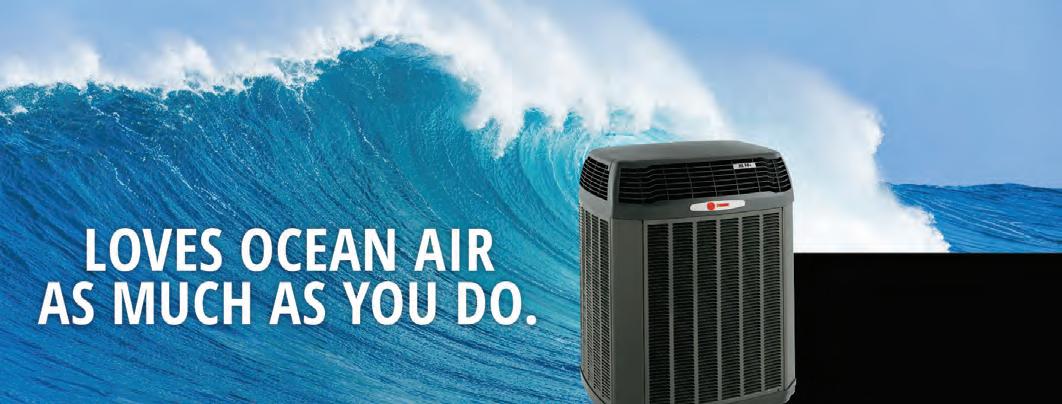







Summer surf fishing is in full swing on the beaches of the Space Coast. August and September are the traditional months for providing an opportunity to hook into the fish of a lifetime from the beach. Use live bait including croakers, mullet and pinfish to target snook in the surf. Free-line or slightly weighted rigs with 40-60 lb. fluorocarbon leader matched with a 3/0-5/0 hook will be the setup. Always match the size of the bait to the hook.
Giant snook are out of season in August, so make sure to have a healthy landing and clean release. Do not take them out of the water for too long and always support their belly with your other hand. Also, be careful of the gill plate on the side of the head which can function as a serrated blade and cause deep lacerations if improperly handled. Read the water conditions for swell and current, and use split shots when needed to attain the correct presentation.
Tarpon can sometimes be seen rolling in the first or second trough, within casting range of shore anglers. Use large-sized suspending Rapala lures or big swim baits for targeting tarpon in the surf on artificial. Live baits for snook and chunked bait like ladyfish and mullet will maintain a presentation suitable for either species.
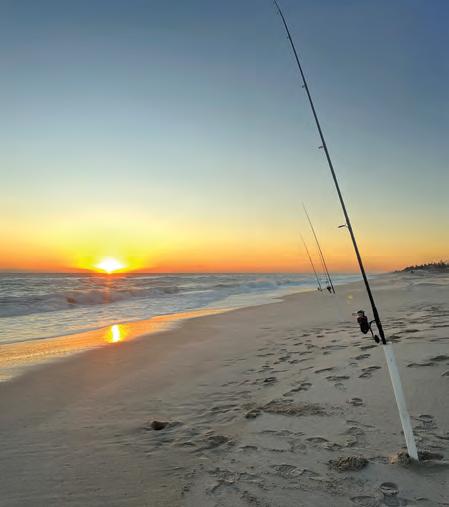
Blacktip sharks may surprise your goal of tarpon and snook when they take hold of your live or chunked bait. Be sure to use circle hooks for a better hook set in the corner of the mouth. There is nothing quite like hooking into a spiraling blacktip. Each acrobatic, contortion and peeling drag is like music
For residential pompano and whiting, use live sandfleas, live shrimp, and fresh clams, with chartreuse and white pompano floats. Match the bait with Fishbites in the clam and crab flavor for your pompano rigs. Recommended gear for the current climate of surf fishing has two different approaches, in my view. Firstly, using the dead stick method. I suggest setting up a multitude of surf fishing equipment. Vary the setup between standard pompano rigs with the above-mentioned baits, while using heavier setups for live baits or chunked baits for shark, tarpon and snook.
Secondly, skip the setup and cast swim baits, diving plugs and jigs to work the shorelines for snook, tarpon, and the occasional flounder. One method keeps you mobile with the advantage of covering ground and skipping the heavy hauling of a total gear setup, while the other encourages a prolonged time period on the beach fishing to acquire the variety of specimens that each rig has the potential to attain. Get out early, hang on and have fun!
CAPT. LUKAS BRICKWEG
Cocoa Beach Surf Fishing Charters
(321) 205-4672


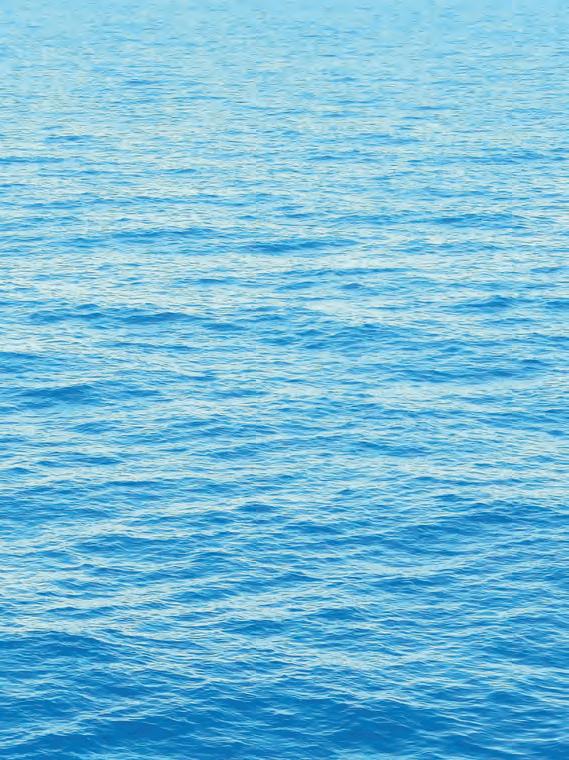

















Capt. Shane Trottier set the hook on his first 40-inch snook. He said he had to jump in the water and chase it under the dock so it wouldn’t break him off.
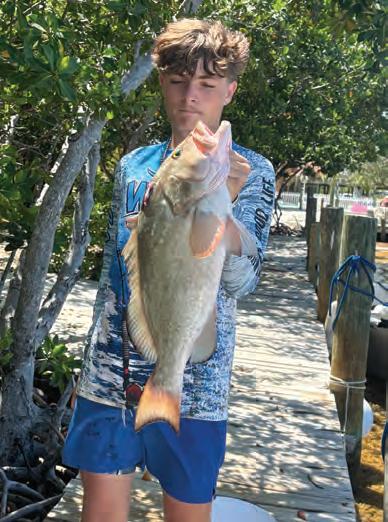
Gina Slovak told us this was her grandson’s first grouper! It measured 26 inches.

Colton Lester caught this beautiful bull mahi fishing in approx. 110 feet of water east of the 8A Reef in Port Canaveral with Capt. Tom Hook. It ate a naked ballyhoo skipped through broken weedlines at 6 knots. Later that evening, Colton cleaned the fish and made mahi ceviche for the crew as they cleaned the boat and the rest of their catch!


Jack caught this nice 36-inch bonnethead shark in Cocoa Beach. It was quickly photographed and released unharmed.


Jim Devine had a blast catching this big red on the Intracoastal Waterway.
For your chance to get featured on the Brag Board, upload your high-quality photos (at least 1MB) with all of the catch details at: www.coastalanglermag.com







0.56:537:57
12:2312:23 0.06:537:56
August is the beginning of our tropical storm season and it can be a great time to fish the IRL as well as the beaches from Melbourne down to Sebastian Inlet as long as the ocean is calm and the tropical storms aren’t wreaking havoc on us.
I like to focus on bait pods along the beaches for tarpon, jacks and sharks, but if the winds are up I will put in time on the flats, spoil islands or mangrove shorelines loaded with bait in the Indian River Lagoon from Palm Bay to Sebastian. Try to get out early and use topwater baits such as Rapala’s Skitter Walk. The bite will stay solid if you switch to live bait as the sun comes up and the water warms. If the fish wont hit topwater early, go subsurface with the Rapala Twitchin’ Mullet and Twitchin’ Minnow. If soft baits are your preference, D.O.A. Shrimp and C.A.L. 4” jerk baits in the mullet pattern or rainbow trout work well.
Look for bait pods along the beaches from Melbourne down to Sebastian to target tarpon, cobia, snook, kingfish and sharks. If anglers have live bait, fish the trough for snook and redfish as well as tarpon looking for a meal. Looking for snook and redfish in the inlet, use live bait along the jetties in the day and fish Rapala Long Cast 14 lures, bucktails and D.O.A. Swimmin’ Mullet at night off the jetties for consistent action. Focus on the creeks from Melbourne down to
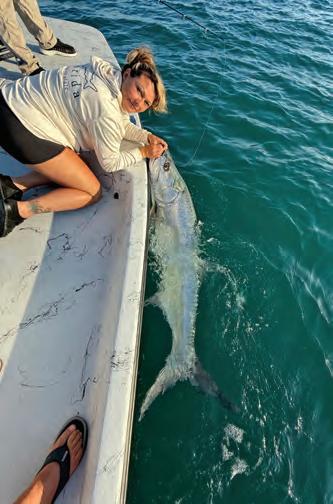
for snook,

and big
After the heavy rains, fish the spillways with live baits or fish the D.O.A. CA.L. paddle tails and TerrorEyz in the deeper waters. For a hard bait, use the Rapala Twitchin’ Mullet and Minnow for good success on snook and juvenile tarpon. Anglers can also target the shorelines, docks and oyster bars for snook, and maybe even find a few flounder too.
Going Coastal Charters www.goingcoastalcharters.com (321) 863-8085


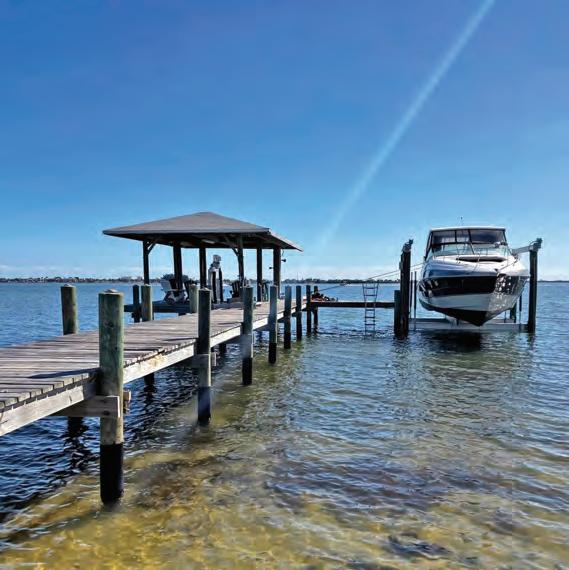
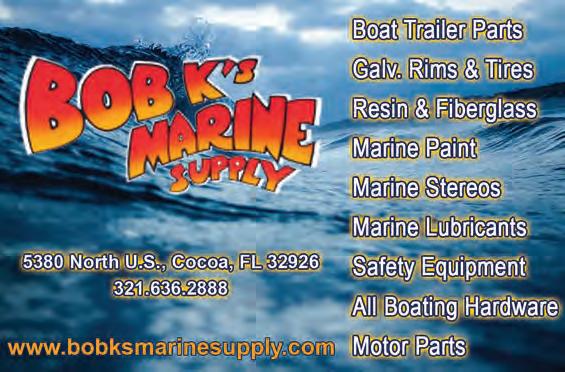




Ashort hop to 1357 South Banana River Drive leads anglers to Marker 24 Marina. The crew at M24 are fishermen as well and we stock a variety of bait, tackle and advice to help one succeed in our local waters. We sell live shrimp, frozen shrimp, cut bait, squid and ballyhoo for both inshore and offshore fishing. We have a selection of inshore and offshore rods and reels, bait buckets, cast nets and many related tackle items, as well as a wall full of hooks and lures that we actually use ourselves in our quests for redfish, snook, trout and tarpon.
Gulp, Z-Man, Yo-Zuri, Rapala, D.O.A. and more are featured on our tackle wall. We have both fluorocarbon and monofilament leaders to offer protection and stealth.
Snacks, drinks and other fishing essentials can be found in the M24 Market as well as sunscreens, hats, sunglasses, performance shirts and other items for fun in the sun. We also have safety equipment and parts for your boat to keep you on the water. You can come by car or boat and get fuel, bait and ice in one quick stop. The marina is open from 8 to 5, seven days a week.
Marker 24 Marina is located on the Banana River at 1357 S. Banana River Dr., Merritt Island, FL 32952. For more information, contact them at (321) 453-7888, marker24marina@gmail.com, or visit marker24marina.com.


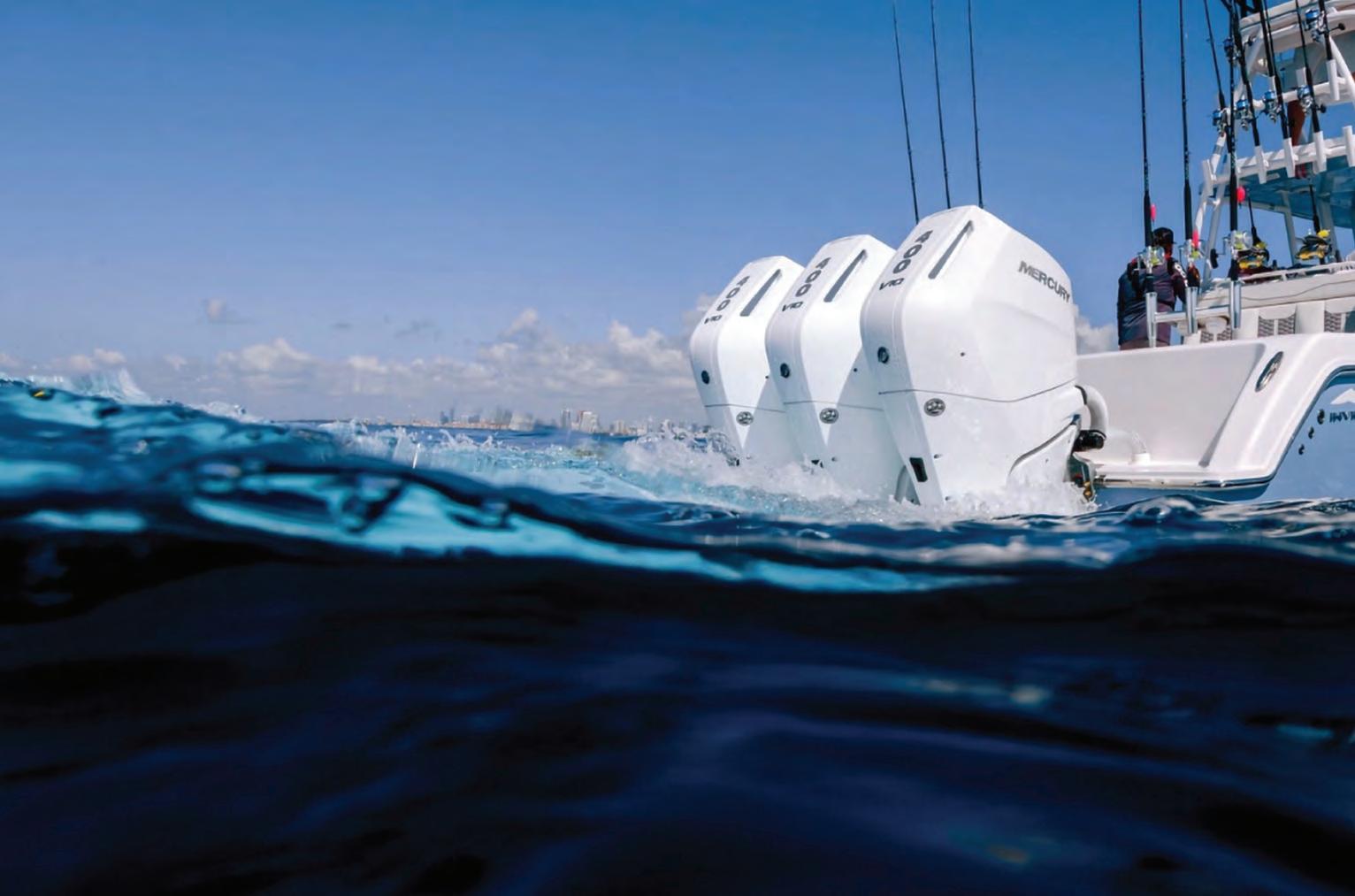
Marker 24 Marina’s staff of trained experts specializes in helping boaters like you continue to make lasting memories on the water. From the controls and rigging to additional technologies and post-purchase support, we’ll help you every step of the way. Take advantage of our affordable services and enjoy increased performance, reliability and peace of mind on the water.


Summer rains have finally arrived along with summer heat! I’ve seen water temperatures as high as 92 degrees late mornings, but the rains have helped moderate it to some degree. This often exaggerates the benefits of fishing first light and late evenings. It creates a magical hour on either end of the day when fish are on the hunt and blasting a variety of baits on the flats and around mangroves. Topwater is a fun way to fish during this time and redfish, snook and trout will blast a variety of lures.
Seagrass beds continue to spread and rising waters are giving manatees access to areas that were previously too shallow. Hopefully the river can maintain the balance.
Later in the day does not mean you can’t catch fish, just go subsurface and focus on areas with structure, shade or depth.
CAPT. SCOTT GOODWIN Marker 24 Fishing Charters www.marker24marina.com (321) 536-7597











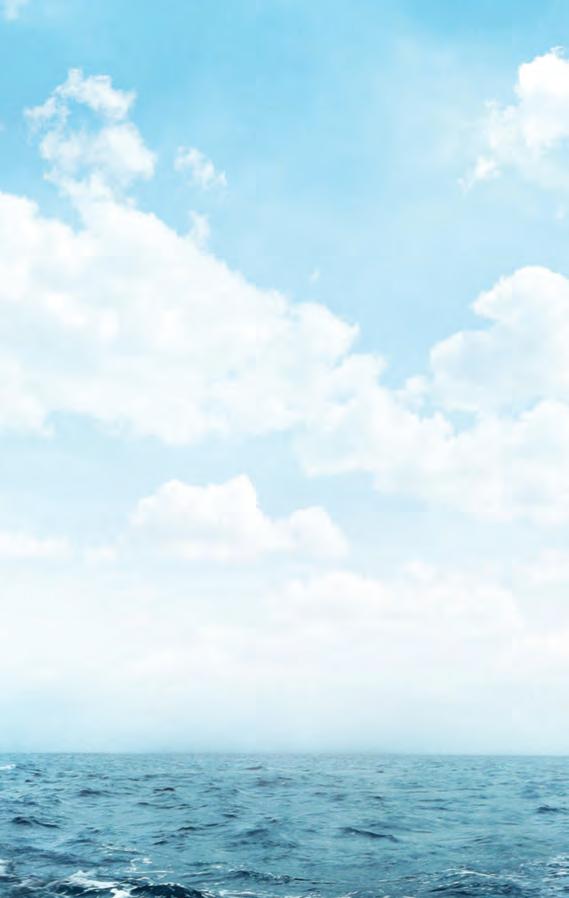
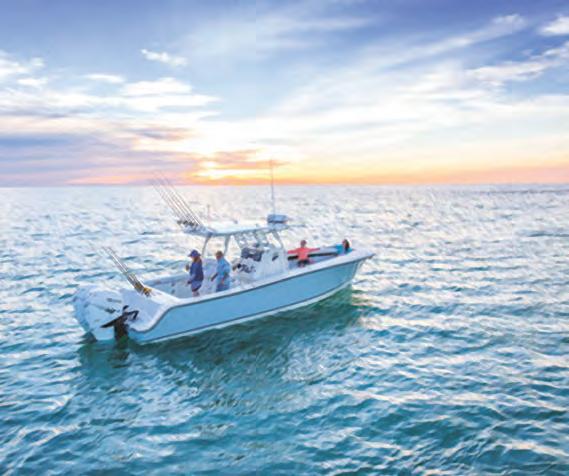






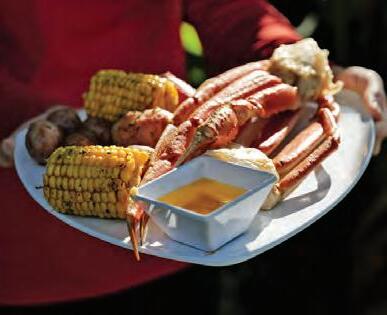
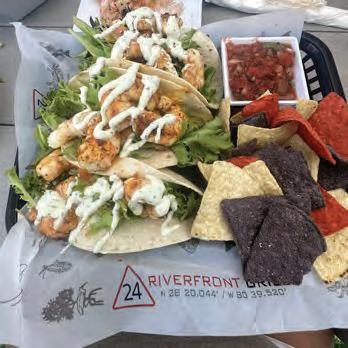
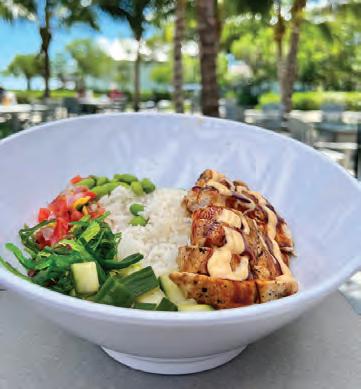



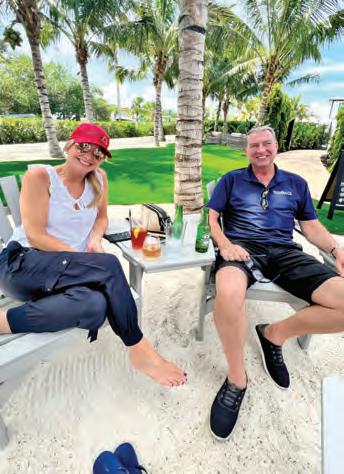




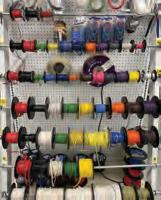
















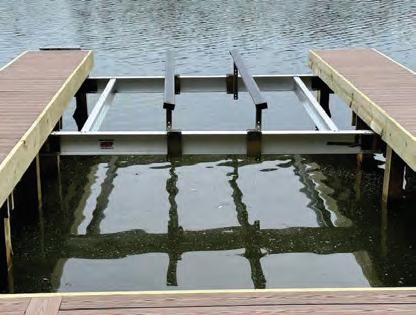




ShoreStation hydraulic boat lifts are a reliable choice for coastal residents and boating enthusiasts alike. Their strong construction, made with corrosion-resistant materials, allows them to withstand harsh environmental conditions, including sun, storms, and saltwater damage. ShoreStation provides a steadfast solution for protecting waterfront investments, o ering peace of mind to owners in the Sunshine State.
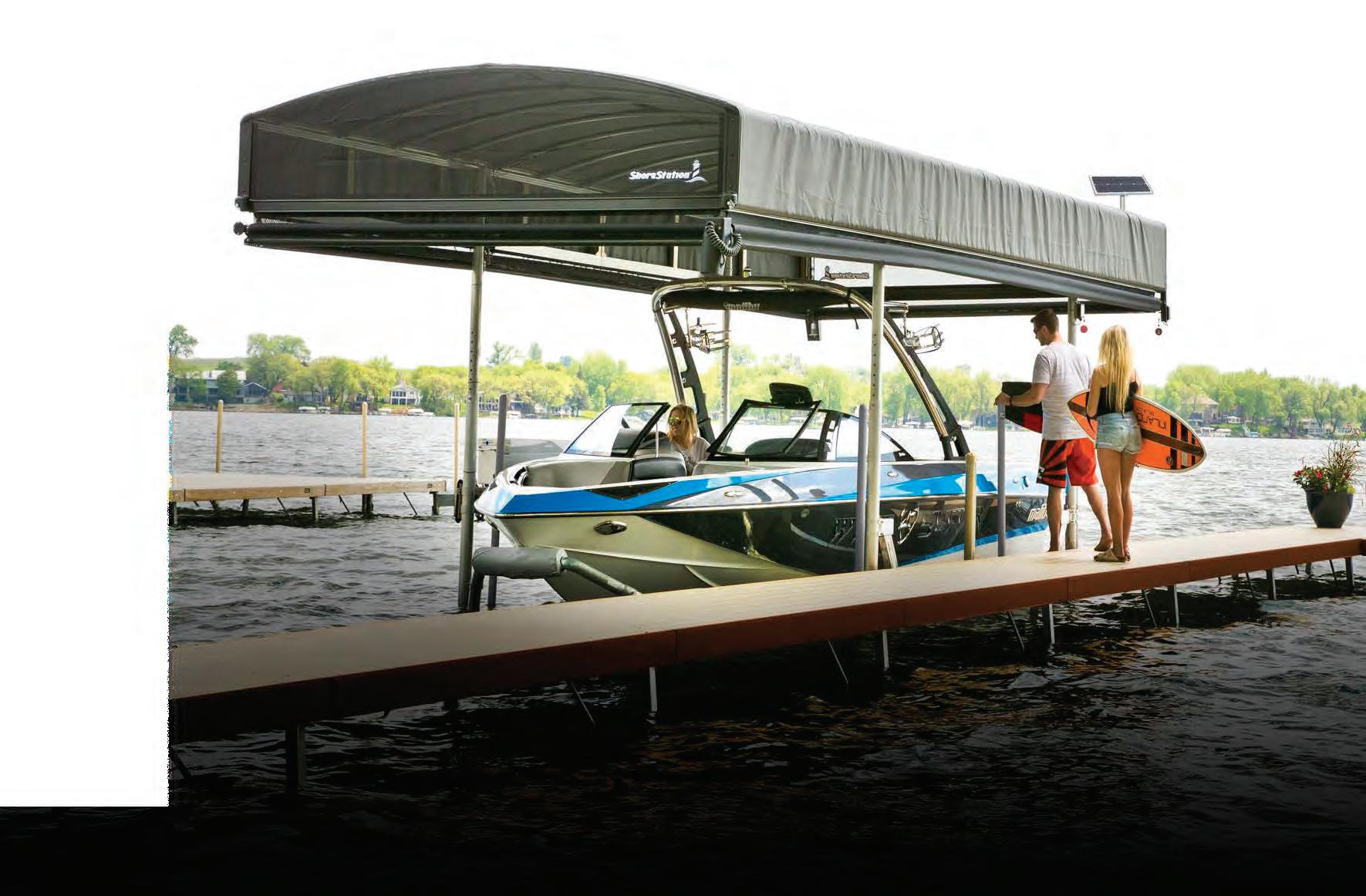
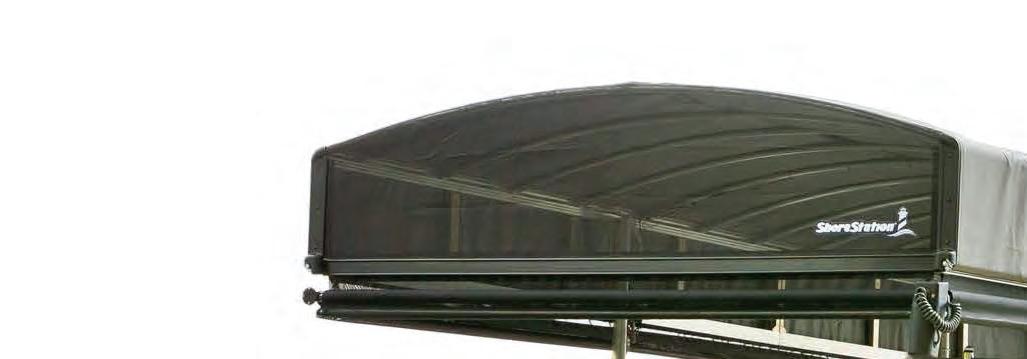





Equipped with exceptional weather resistant fabric and breathable SunTex 80 woven mesh ends for maximum protection and durability,

Made from the highest quality materials, our innovative hydraulic boat lift is one of the fastest and safest lifts on the market today. When you have a hydraulic lift, there’s no need to worry about wind and waves getting in your way. This lift will give you con dence to safely land and secure your boat in less-than-ideal conditions.
Never miss another moment on the water. Power your lift with clean, free solar power. Our speedy 20 watt charger features solar regulator drainage protection, saving your battery from permanent damage caused by overcharging.




The Florida Fish and Wildlife Conservation Commission (FWC) is preparing to implement a new law aimed at strengthening vessel accountability and enhancing protections for Florida’s waterways. Senate Bill 164, signed into law by Governor Ron DeSantis on June 19, went into e ect on July 1, 2025. is legislation is designed to help reduce the number of at-risk and derelict vessels across the state and improve enforcement tools for FWC o!cers and partner agencies. Key provisions of the new law include:
• Clari ed Ownership Standards: e de nition of “vessel owner” is clari ed, and a valid vessel title will now serve as prima facie (presumed) evidence of ownership.
• Stronger Requirements for At-Risk Vessels: Vessel owners must now complete an E ective Means of Propulsion (EMP) evaluation upon request by law enforcement. If an o!cer has reason to believe the vessel lacks an e ective means of propulsion and the owner is present, the evaluation must be conducted immediately or within 48 hours if noti ed otherwise.
• Public Nuisance Vessel Designation: A vessel may now be declared a public nuisance — subject to removal like a derelict vessel — if the owner
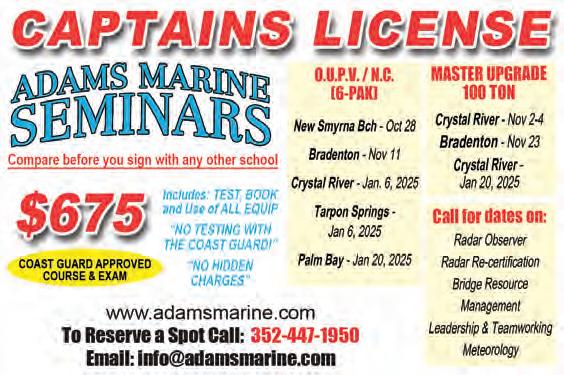



receives three citations related to any at-risk conditions within a 24-month period, including unpaid citations or failures to appear in court.
• Expanded Noncriminal Infractions: Violations such as expired registration and long-term anchoring may now be addressed through mailed noncriminal citations from law enforcement.
• More Flexible Use of Removal Funds: Derelict Vessel removal funding may now be used not only for removing DVs but also for preventive removals under the Vessel Turn-In Program and for public nuisance vessels.
• Harsher Penalties for Repeat DV O enders: First o ense - First-degree misdemeanor; Second o ense - ird-degree felony; ird o ense - Seconddegree felony.
• No Liveaboard on Derelict Vessels: It is now a rst-degree misdemeanor to live aboard a vessel that has been declared derelict by the court or the owner has not requested an administrative hearing.
“We have seen increasing success in our e orts to combat the ongoing derelict vessel problem in Florida’s waters,” said Capt. Travis Franklin, leader of the FWC Derelict Vessel Removal and Prevention Program. “ is new legislation enhances our e orts to not only remove derelict vessels but also prevent at-risk vessels from becoming derelict.”
Derelict vessels remain a priority for the FWC, and the multi-year initiative to reduce the number of derelict vessels on Florida’s waterways is ongoing. ese vessels pose serious risks to seagrass beds, marine life, navigation, public safety and property. e Boating and Waterways Section is leading this statewide e ort in partnership with local governments and law enforcement.
Leaving a vessel in a derelict condition is a crime. Derelict vessels, including those that are sinking, grounded, stripped or lacking vital systems, threaten both people and Florida’s natural resources.
FWC has removed nearly 200 vessels through the Vessel Turn-In Program and is actively taking applications from at-risk vessel owners. Vessel owners can call VTIP specialists at the FWC for more information on the program at 850-488-5600 or visit the VTIP website at MyFWC.com/boating and click on “Vessel Turn-In Program” on the second slider at the top of the page.
For more information on derelict or vessels at risk of becoming derelict, visit MyFWC.com/Boating and select “Waterway Management” followed by “Derelict Vessel Removal Program.”
Florida Fish and Wildlife
Conservation Commission (FWC)
O!cer Wil Raker certi ed a new state record spotted bass, caught by angler Joe Durden from Blountstown.
e sh weighed 3.93 pounds and measured 18.25 inches in length.


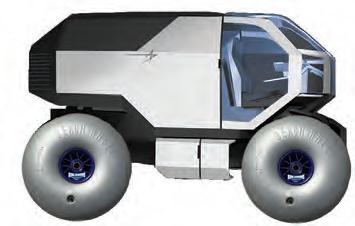


Durden was excited to catch his spotted bass on the Apalachicola River during the Fi h Annual Liberty County Bulldog Booster Bass Tournament out of Bristol Landing.
“I knew right away this was potentially a state record,” said Durden. “ is was the biggest spotted bass I had ever seen on the river.”

Durden, an avid bass tournament sherman, caught his spotted bass on a crankbait while using LiveScope technology. A er landing the sh, an FWC freshwater sheries biologist met with Durden to discuss his catch and verify it was a spotted bass.
“Catching a state record sh is a tremendous accomplishment for any angler,” said Andy Strickland, sheries biologist with FWC’s Fish and Wildlife Research Institute. “Particularly a record that’s held the test of time for 40 years.”
e previous spotted bass state record was 3.75 pounds, caught by angler Dow Gilmore on June 24, 1985, on the Apalachicola River.
Anglers can check state records by visiting MyFWC.com/Freshwater and clicking on “State Record Fish.”
It’s no fsh tale when you run with a John Deere. You can get everything done faster and easier, so you get more time on the water. Plus, our special offers make them the catch of the day.



The boating industry is jumping onboard with Dometic’s revolutionary DG3 Gyrostabilizer, due to its groundbreaking spin-up and spin-down times, energy e%ciency and superior performance in all types of sea conditions. is solution has literally taken vessel stabilization to a “Whole New Level,” capturing the attention of boaters and boat builders around the world. e !rst in a planned line of advanced stabilization solutions by Dometic, the new DG3 is targeted at the 35- to 41-foot !shing boat market.
Soon a er Dometic won the 2025 NMMA Innovation Award at the Miami International Boat Show for the DG3, leading American boat builder Regulator Marine announced that its new-for-2025 Regulator 35 Center Console would be o ered with Dometic’s DG3. “We are honored to have a respected builder like Regulator come onboard,” said Dometic Marine Segment President Eric Fetchko. “ eir latest center console agship is an ideal match for our system in terms of size, hull performance, overall quality and a wide range of premium features and technology. It’s also a wonderful platform to showcase our advanced capabilities, including energy e%ciency that enables o shore use without the need for an onboard generator,” added Fetchko.
e DG3 reduces spin-up time by more than 65%, reaching full readiness in just 16 minutes, compared to the typical 50 minutes required by current systems in the market. is means you’ll
get out on the water and out to distant !shing grounds faster. e system’s downtime is equally impressive, fully lowering in just 20 minutes, a signi!cant improvement over the eight or more hours (15X faster) required by current systems.
Dometic also pioneered innovations in energy storage and recapture, enabling the battery to recharge e%ciently. DG3 uses Dometic’s proprietary, industry-proven Inverted Roller Screw technology for true dynamic control and signi!cantly improved roll reduction performance over a wide range of sea sates. In addition, the push-pull motion of Dometic’s all-electric procession actuator is used to create power that contributes to running the system. During spin down, Dometic’s regenerative braking technology recharges the system’s dedicated 48V Lithium-Ion spin-up battery for the next use. Overall, the DG3 reduces power consumption by an impressive 40% compared to other gyros on the market.
DG3’s Inverted Planetary Roller Screw technology and proprietary all-electric procession actuator provide dynamic control of the gyro hemisphere for instant response to vessel movement and superior comfort over a full range of sea states. is allows DG3 to react faster to heavy wave motions, while also smoothing the ride in small and long period waves, where current gyros are less e ective.
Durability and reduced maintenance were also key goals for Dometic engineers. Dometic’s



durability, minimizes required service, and reduces total cost of ownership. Featuring a slower-spinning ywheel, larger, more robust bearings, patentpending inner race cooling, parallel path cooling, and a titanium heat exchanger, the DG3 is designed to stay cool and operate reliably for the long run.
Dometic designed the DG3 as an easy “dropin” replacement for other comparably sized systems available in the market today. e DG3 !ts within the same footprint and clearance speci!cations and features reversible mounting feet to address common challenges encountered by installers. To meet the needs of today’s boating market, Dometic’s DG3 is compatible with 12-, 24- and 48volt house battery systems.
To learn more about how Dometic’s DG3 can take your o shore shing adventure to a whole new level, visit www.dometic.com.





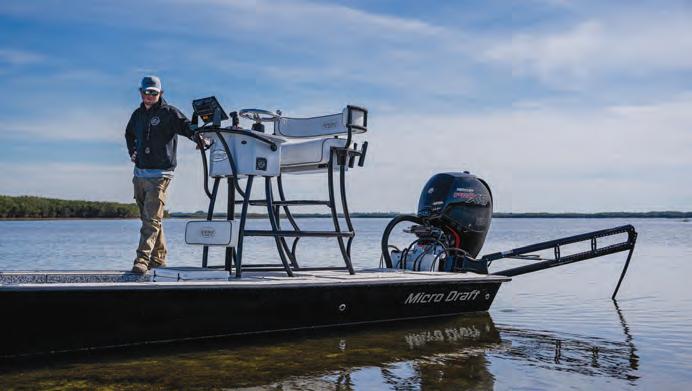



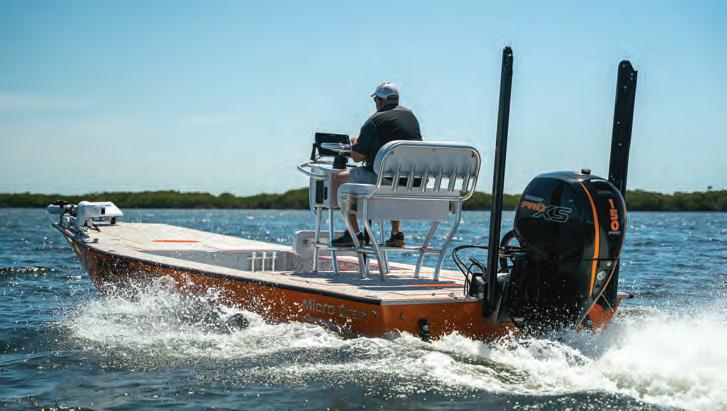




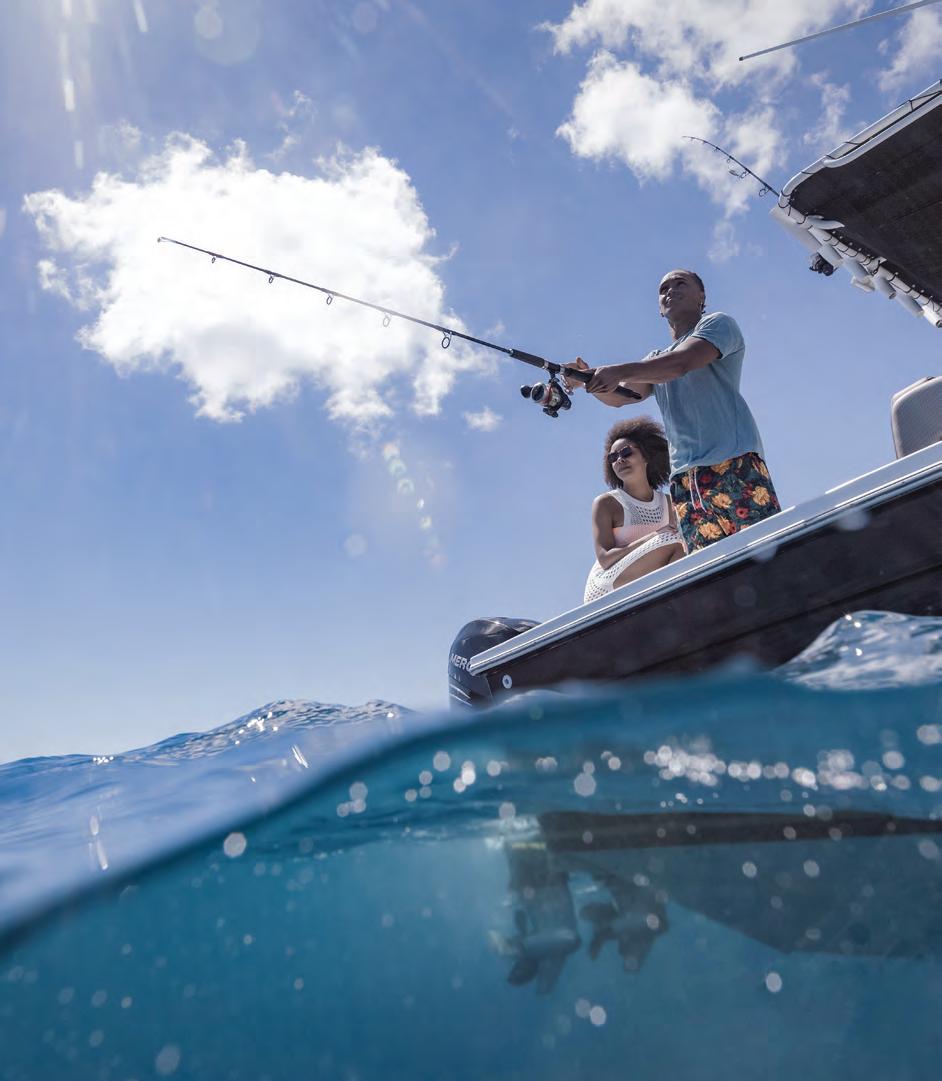
Nestled in the heart of the Caribbean, the US Virgin Islands embody a harmonious blend of natural beauty, cultural vibrancy, and laid-back serenity. ese islands are more than just a picturesque getaway; they are a living testament to nature’s rhythm and resilience, e ortlessly in tune with the world around them.
With no passport required for U.S. citizens, from the moment you arrive, the islands’ natural rhythm is palpable. e gentle sway of palm trees, the soothing sound of surf crashing against sandy shores, and the vibrant melodies of local music all echo the heartbeat of this tropical paradise. e islands’ lush landscapes, with their verdant hills and crystal-clear waters, mirror the steady pulse of life that sustains the local ecosystems and communities alike.
e US Virgin Islands’ environment is a symphony of biodiversity with world class shing and diving. ese natural elements are not static; they dance in harmony, in uenced by the tides, wind, and seasonal changes—further emphasizing the islands’ intrinsic rhythm. is delicate balance underscores the importance of conservation e orts, ensuring that future generations continue to experience the islands’ natural cadence.
Culturally, the US Virgin Islands are equally in tune. e music, dance and festivals re ect a vibrant heritage rooted in African, European and Caribbean traditions. e spirited calypso beats
and reggae rhythms are expressions of life's ongoing dance—celebrating resilience, community and joy. ese cultural expressions are an extension of the islands’ natural rhythm, showcasing how human life here moves seamlessly with nature’s ow.


In a world o en dictated by chaos and rapid change, the US Virgin Islands serve as a reminder of the beauty of being in sync with nature’s tempo. eir natural, cultural and ecological rhythms o er
a blueprint for sustainable living and harmony. As travelers and residents alike continue to embrace this rhythm, they uphold a legacy of balance—one that celebrates life’s natural ow and the enduring spirit of these remarkable islands. In the US Virgin Islands, being in rhythm isn’t just an ideal; it’s a way of life.

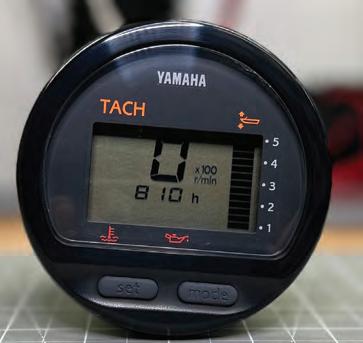




In some parts of the country the bass spawn is already starting to come to an end like it is down here in Florida and others may not start up for another couple months. Regardless of your phase, this post spawn !shing tip should help you dial in your !shery when the time is right for you! One thing is the same for every !shery and every species of bass a er they spawn, they are hungry! is can create some awesome and fun !shing opportunities that have led me to some of my best days on the water.
Typically a er the largemouth bass spawn, there are other !sh that will then begin their spawn. I’m not a scientist, but I’m sure this has a lot to do with the speci!c timing of why the bass do their thing when they do. In most areas of the southern United States, I know that the bluegill and o en times the shad, if they are in your lakes, will start to spawn very shortly a er the bass !nish up. Bass will use every advantage they can when these bait!sh group up to feed back up a er a long couple weeks or months protecting their eggs in the shallows and this can make for some fun !shing.
Smallmouth bass and spotted bass are very similar as well in the aspect of taking advantage
TYLER WOOLCOTT

of bait schools when they get in that post spawn phase. I have seen them group up and attack shad, perch, alewife schools and any other bait that is readily available to them. Typically I do a lot of my searching for these things with my electronics and forward facing sonar which is a very helpful tool for learning !sh activity and seeing what’s going on under the surface of the water.
Most of the time you can use clues you can visually see with your eyes to help you !nd this feed that is going on. Typically birds feeding on the water is an awesome sign of a feeding frenzy and that is one thing I ALWAYS look for. Also always keep your eyes peeled for !sh blowing up on the surface or shad ickering as well. Sometimes the very smallest clue can lead you to much larger picture. Birds standing on speci!c banks, the sound of bluegill popping around vegetation, anything that clues you in to bait in the area usually means the bass aren’t very far.
Hopefully this tip will help you when the !sh in your area get into the post spawn feed! Find the bait, you will !nd the bass! I always try to duplicate the bait!sh with whatever kind of lure you are throwing. Bluegill eaters - I will

throw a frog or a swimming in bluegill colors, etc. Shad eaters - I will throw white or silver topwaters and crankbaits, etc. Always match the hatch if possible! Good luck out there this season and tight lines!
Tyler Woolcott is a professional tournament angler and guide. Check out his website at www.tylerwoolcott shing.com.


“I never expected it to be so beautiful that it takes your breath away.”
— Kaya C., on Stauer Opals
In a quaint village, nestled between rolling hills, lived a young woman with a deep appreciation for gemstones. Her grandmother gifted her a delicate cross pendant adorned with opals. "e opals shimmered with a mesmerizing play of colors, reflecting hues of blues, greens, and fiery oranges. Her grandmother shared the legend of the opals, believed to bring hope, purity, and luck to those who wore them.
Using this story as inspiration, Stauer brings you the Opal Spirit Cross Pendant. With over 2 total carats of Kyocera lab-created opals set in .925 sterling silver encased in yellow gold, this pendant is a radiant celebration of beauty and craftsmanship. Each opal captivates with a kaleidoscopic dance of fiery oranges blending into oceanic blues, streaked with flashes of vibrant green that seem to come alive with every movement. "e shimmering opals are skillfully arranged to create an enchanting, otherworldly glow, embodying the spirit of hope and harmony.
"is breathtaking combination of color and craftsmanship is available as a limited availability of

only 930 pieces, making it a rare and treasured addition to your jewelry collection. Plus, when you order today, you’ll receive the gold-!nished sterling silver chain—a $69 value—absolutely free!
Don’t miss your chance to own this exclusive tribute to timeless elegance and meaningful symbolism. Necklace Speci!cations:
• 2 ½ ctw. Kyocera lab opals and DiamondAura® accents
• Yellow gold-finished .925 sterling silver setting
18"
silver



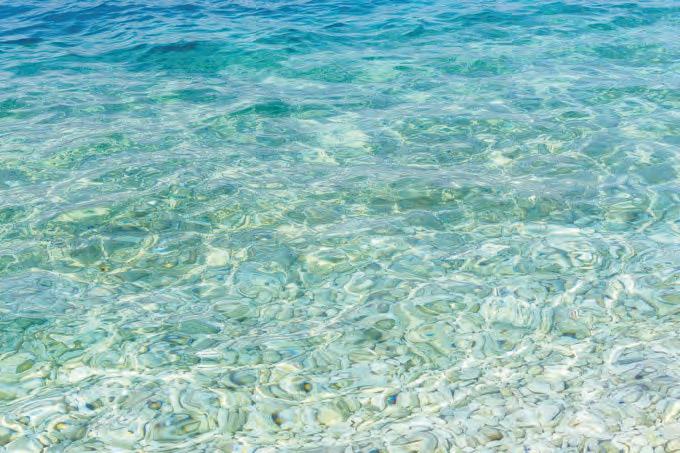









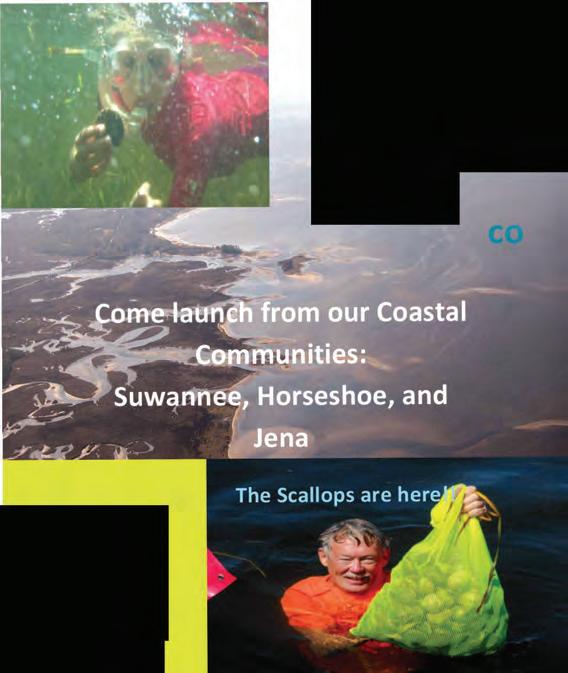



The quest to find the ultimate men’s watch has traditionally been a difficult one in the world of fashion. A timepiece with the perfect look and functionality has long been the goal of both watch designers and enthusiasts alike.
The Renegade Blue Chronograph Men’s Watch is the perfect combination of style and function. With a sleek design that features a bold blue dial, rose gold hands and hour markers, and a durable sports silicone band, this timepiece will instantly elevate any outfit.
The three sub-dials provide a precise timekeeping function. The sports silicone band is durable yet comfortable, providing a secure fit that won’t slide around on your wrist. The band is also easy to clean and maintain, making it perfect for everyday wear. The watch’s 30 Metre Water Resistance rating ensures that it has you covered whatever the occasion.
The Renegade Blue is also built to last, with a sturdy stainless steel caseback and exquisitely detailed bezel. The watch is powered by a super reliable quartz movement, which is covered by our incredible 5 Year Movement Warranty - ensuring accurate timekeeping for many years to come!



At the amazingly low price of just $99 plus S&H, this watch is an absolute steal. Don’t miss out on the chance to own the Renegade Blue and Rose Gold Chronograph Men’s Watch - order yours today!












